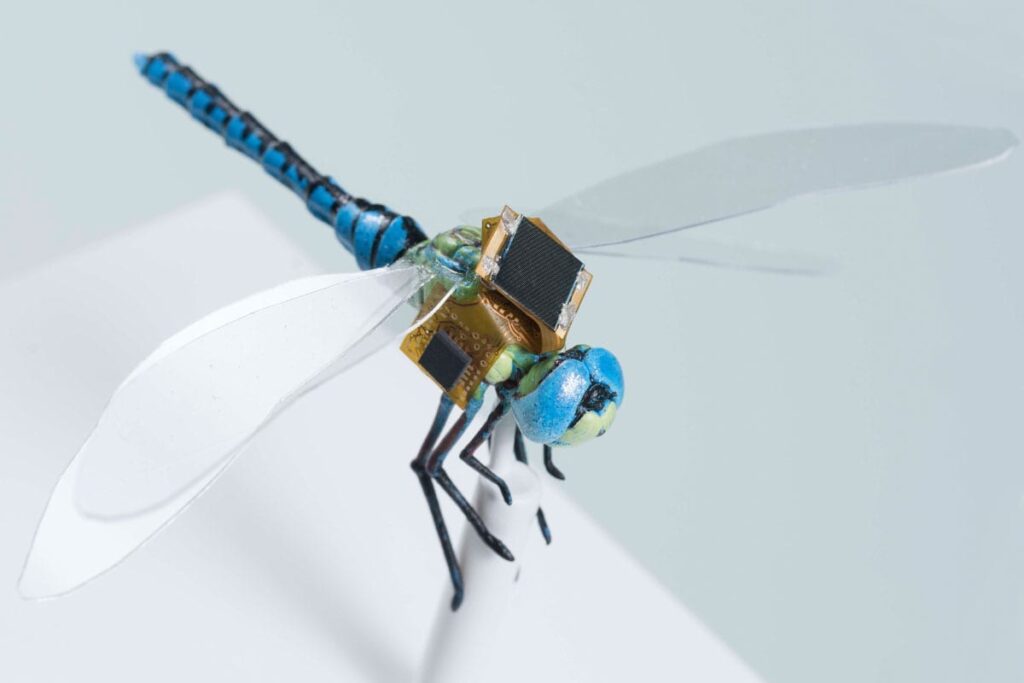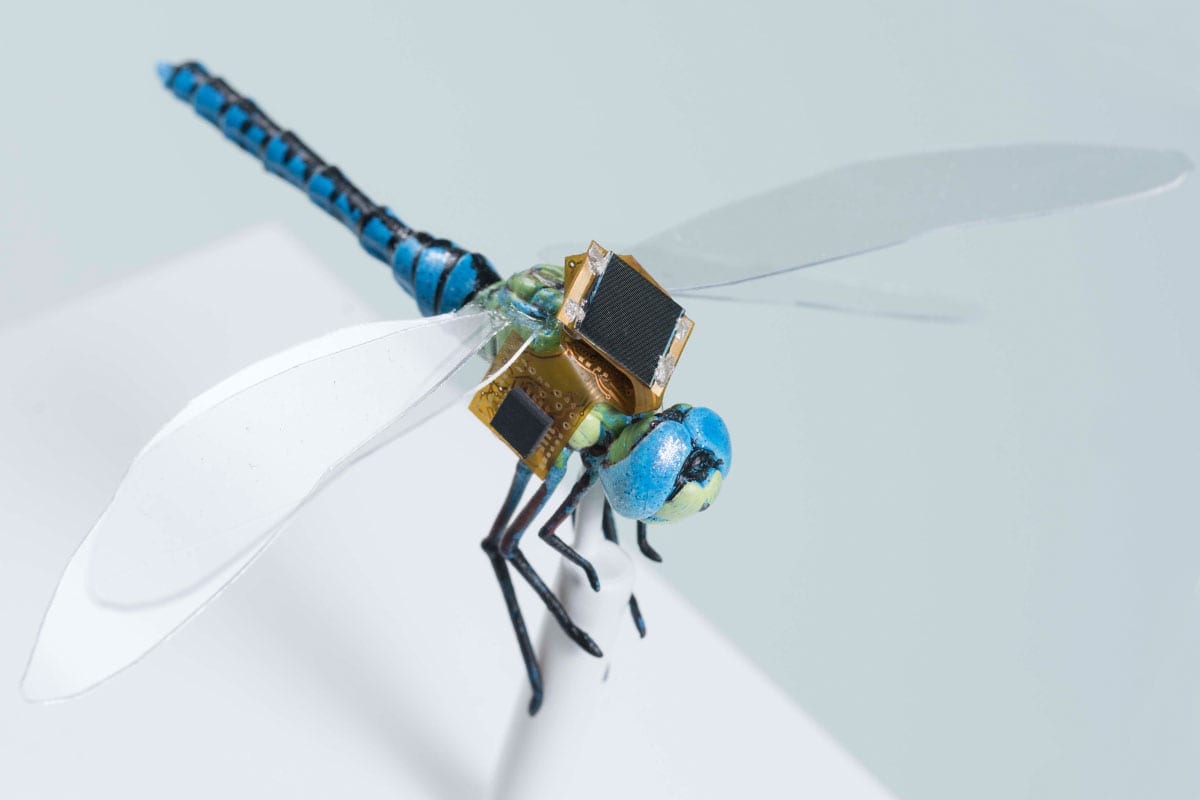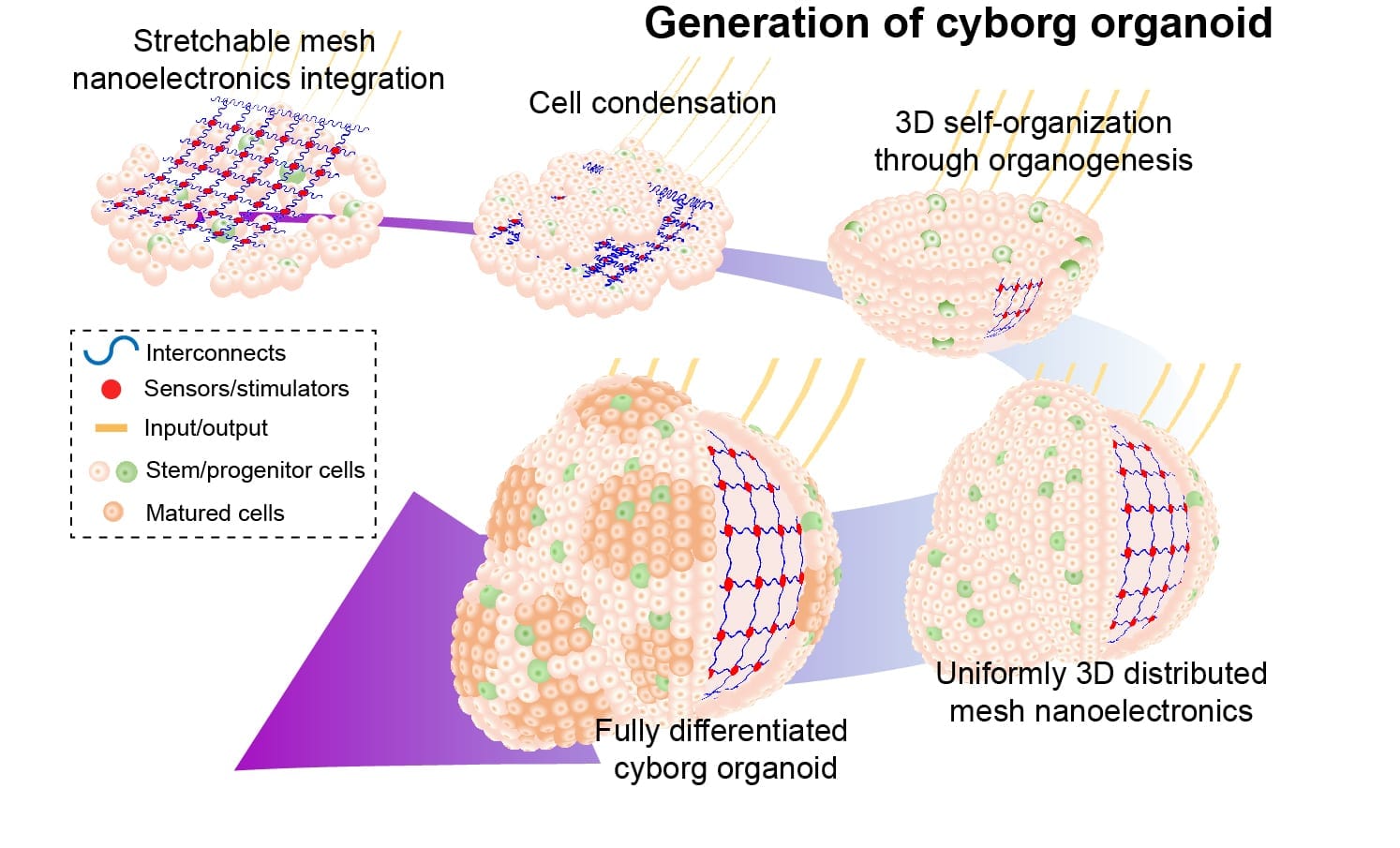
The smallest aerial drones mimic insects in many ways, but none can match the efficiency and maneuverability of the dragonfly. Now, engineers at Draper are creating a new kind of hybrid drone by combining miniaturized navigation, synthetic biology and neurotechnology to guide dragonfly insects. The system looks like a backpack for a dragonfly.
DragonflEye, an internal research and development project at Draper, is already showing promise as a way to guide the flightpath of dragonflies. Potential applications of the technologies underpinning DragonflEye include guided pollination, payload delivery, reconnaissance and even precision medicine and diagnostics.
“DragonflEye is a totally new kind of micro-aerial vehicle that’s smaller, lighter and stealthier than anything else that’s manmade,” said Jesse J. Wheeler, biomedical engineer at Draper and principal investigator on the program. “This system pushes the boundaries of energy harvesting, motion sensing, algorithms, miniaturization and optogenetics, all in a system small enough for an insect to wear.”
DragonflEye has been a team effort between Draper and Howard Hughes Medical Institute (HHMI) at Janelia Research Campus to create new optogenetic tools that send guidance commands from the backpack to special “steering” neurons inside the dragonfly nerve cord.
Research at HHMI—led by Anthony Leonardo, Janelia Research Campus group leader—has led to a deeper understanding of “steering” neurons in the nervous system of the dragonfly that control flight. HHMI is applying techniques in synthetic biology to make these “steering” neurons sensitive to light by inserting genes similar to those naturally found in the eye.
Draper is developing tiny optical structures, called optrodes, that can activate the special “steering” neurons with pulses of light piped into the nerve cord from the dragonfly’s backpack. Traditional optical fibers are too stiff to be wrapped around the tiny dragonfly nerve cord, so Draper developed innovative flexible optrodes that can bend light around sub-millimeter turns. These optrodes will enable precise and targeted neural activation without disrupting the thousands of nearby neurons.
“Someday these same tools could advance medical treatments in humans, resulting in more effective therapies with fewer side effects,” said Wheeler. “Our flexible optrode technology provides a new solution to enable miniaturized diagnostics, safely access smaller neural targets and deliver higher precision therapies.”
Draper’s work on the DragonflEye program builds on its legacy in autonomous systems, microsystems, biomedical solutions and materials engineering and microfabrication. This deep expertise extended previous Janelia Research Campus work in energy harvesting and miniaturization to create the insect-scale autonomous navigation and neuromodulation system.
DragonflEye provides opportunities to put technology on some of nature’s most agile insects. For instance, honeybees, whose population has collapsed by half in the last 25 years, could be equipped with Draper’s technology to assist with pollination. One of nature’s greatest pollinators, honeybees contribute more than $15 billion to the value of U.S. agriculture every year. Draper’s tiny guidance system could help stem the loss of pollinators by monitoring their flight patterns, migration and overall health.
[osd_subscribe categories=’cyborg’ placeholder=’Email Address’ button_text=’Subscribe Now for any new posts on the topic “CYBORG”‘]
Receive an email update when we add a new CYBORG article.
The Latest on: Cyborg
[google_news title=”” keyword=”cyborg” num_posts=”10″ blurb_length=”0″ show_thumb=”left”]
via Google News
The Latest on: Cyborg
- Miami Heat vs Boston Celticson April 27, 2024 at 1:06 am
Prediction for the NBA match which will take place on April 28. Who will turn out to be stronger? Check the team conditions! Several betting options are available.
- Fans stunned at how ‘cyborg’ Mykolenko stayed on the pitch after Everton defender’s ankle bends horribly vs Liverpoolon April 24, 2024 at 1:46 pm
FANS labelled Vitalii Mykolenko a “cyborg” and couldn’t believe his “ankle is still attached to his body” – after the Everton defender CARRIED ON despite a ...
- These action-packed books will keep you guessing until the last pageon April 24, 2024 at 12:42 pm
This month’s sci-fi and fantasy novels from Elaine U. Cho, John Wiswell and others will take you to strange worlds.
- Puma x Ottolinger Features Everything Required to Survive a Dystopian Future, Including Cyborg Suitson April 24, 2024 at 3:32 am
During Paris Fashion Week Spring 2024, Ottolinger debuted its Puma collab on the runway and it flew off the virtual shelves.
- Cyborg Cockroaches Programmed to Move in Formationon April 23, 2024 at 9:11 am
In an experiment out of The Terminator, scientists released a hoard of 20 cyborg cockroaches into a sandy artificial desert. Each live insect wore a tiny computer backpack that could control and steer ...
- 10 More Movie Mistakes You Can’t Believe You Didn’t Spoton April 23, 2024 at 3:50 am
If you need an example of just how much of a difference the decision to leave a few additional seconds in a sequence can make, well, look no further than this rather comical but easily overlooked ...
- Swarm of cyborg cockroaches that act as hunting machines’ to be stuffed inside large robots before being let looseon April 17, 2024 at 1:01 pm
CYBORG cockroaches could be put inside larger robots and released on missions, according to new research. The cockroaches all have gadgets attached that allow them to be controlled by a computer.
- Computer-mounted cyborg cockroach swarms could help in rescue missionson April 17, 2024 at 6:31 am
A new study suggests integrating living insects with tiny electronic controllers to advance multi-robot navigation on tough terrain.
- Watch a swarm of cyborg cockroaches controlled by computerson April 17, 2024 at 4:39 am
Remote-controlled cockroaches with computers mounted on their backs can move as a swarm towards a target location, and could be used for search missions ...
via Bing News











